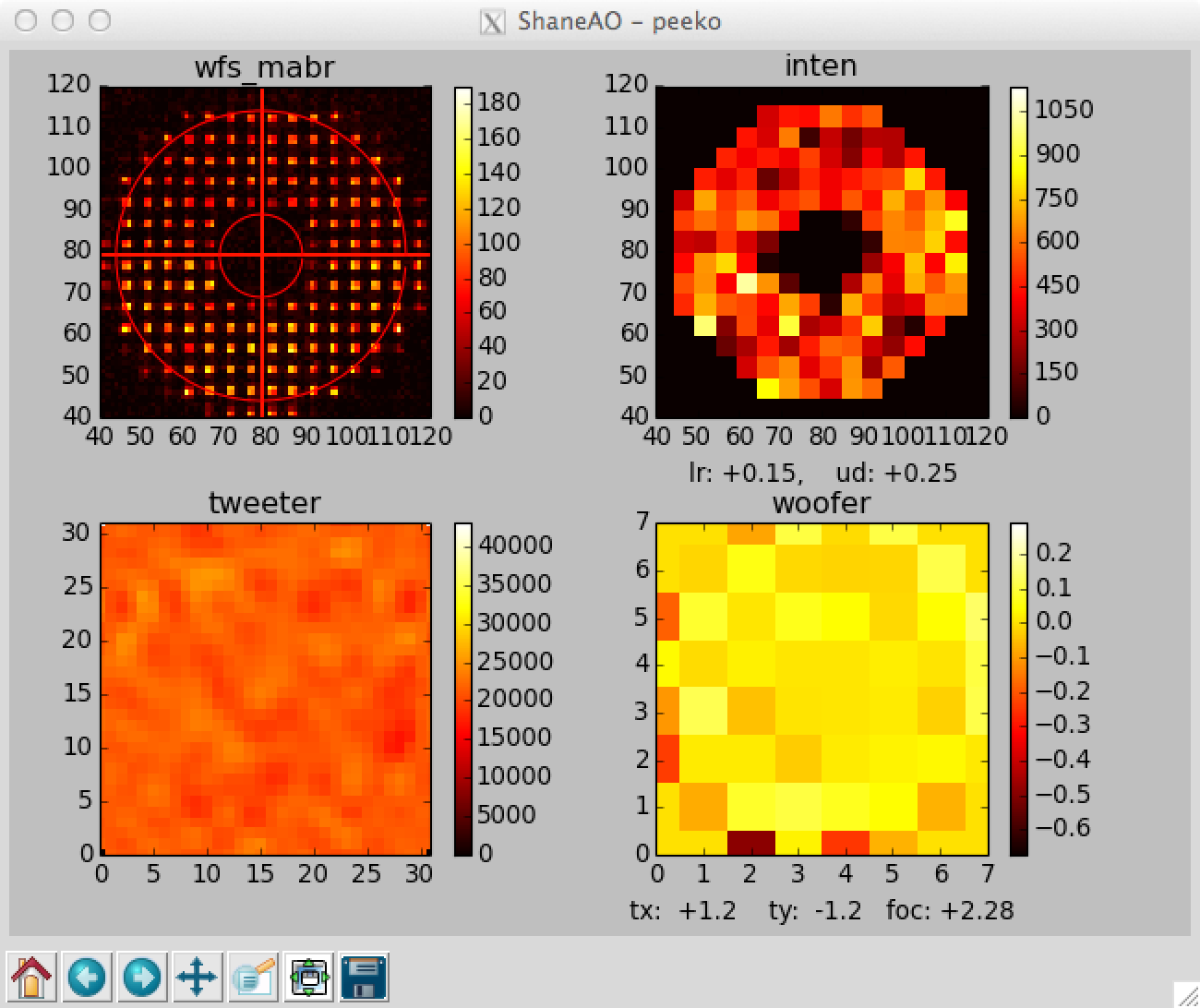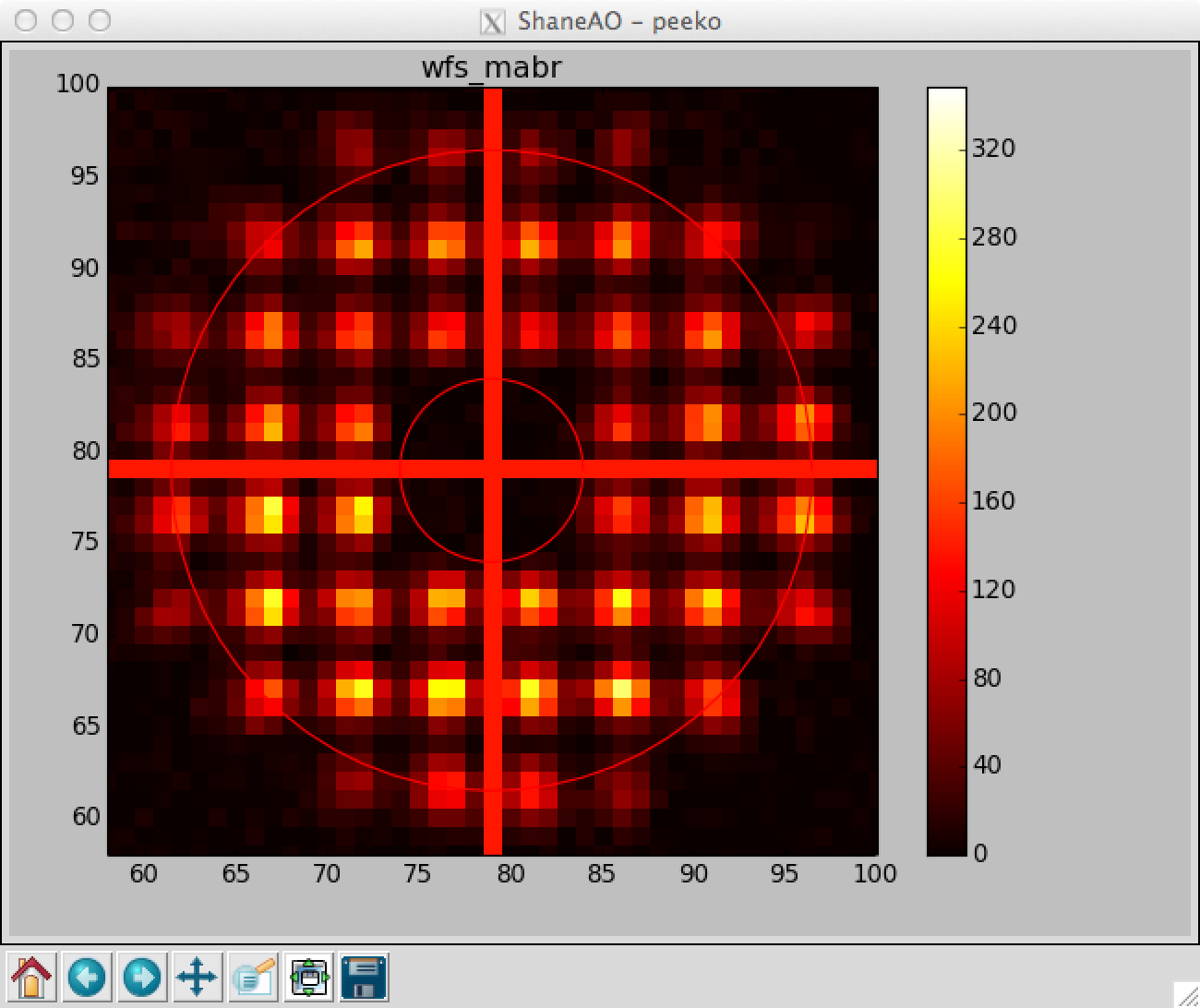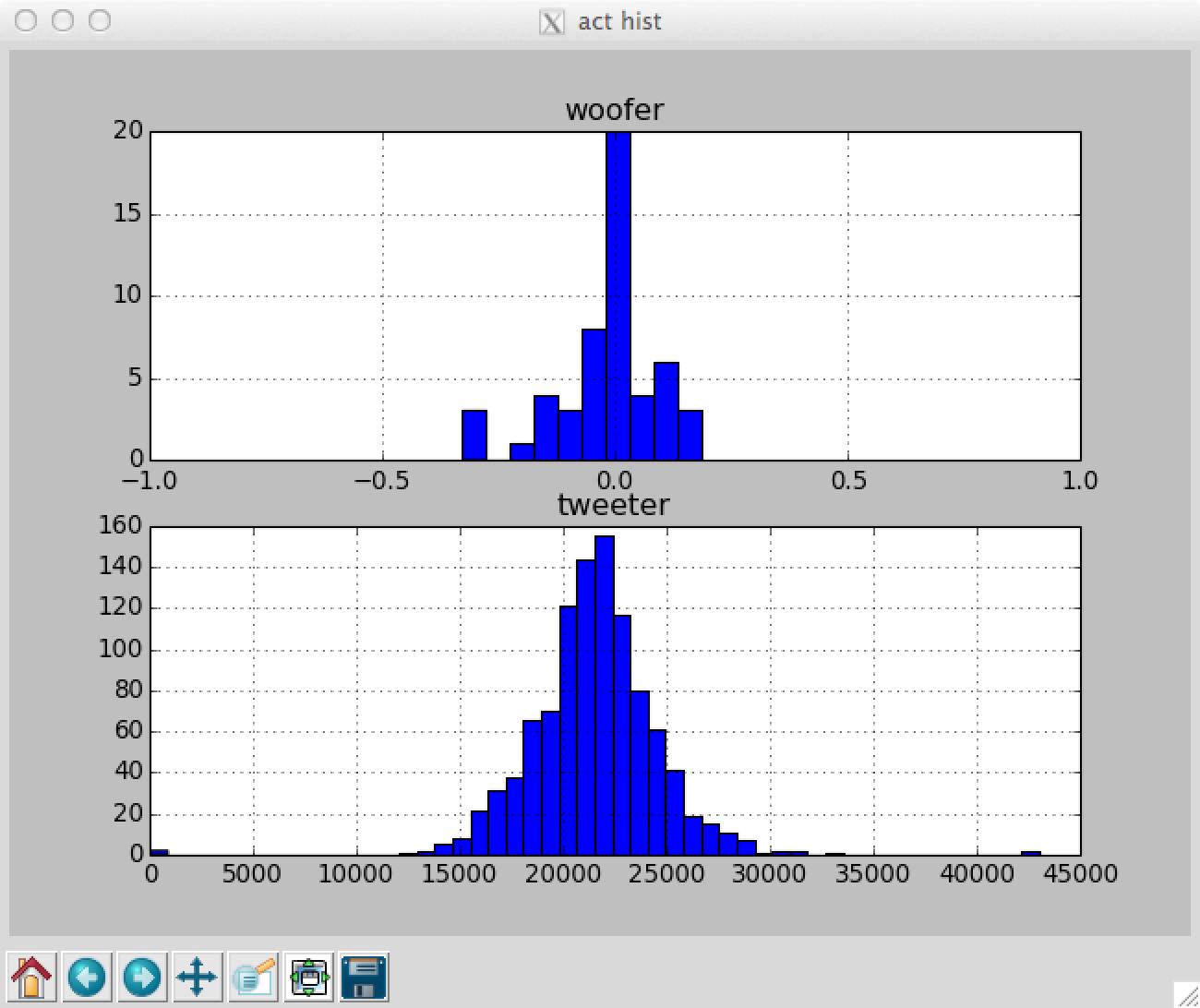Peeko
Peeko is the display tool that shows the WFS image, sub-aperture intensity values, and the Woofer and Tweeter DM actuator positions.Peeko is a python program that runs on shade and is started at the command line by typing peeko. A display window (Figure 1) will start and commands may be typed at the python prompt to modify the display in various ways.

Figure 1: Default Peeko display. Clockwise from upper left: WFS image,
Sub-aperture intensities, Woofer DM actuator positions, Tweeter DM actuator
positions.
Commonly used commands used in peeko are:
- all4()
- Show all four displays (as in Figure 1)
- wfs_maff()
- Display the moving average of the flat-fielded WFS image
- wfs_mabr()
- Display the moving average of the background subtracted WFS image
- wfs_br()
- Display the background subtracted WFS image
- wfs_raw()
- Display the raw WFS image
- wfs_ff()
- Display the flat-fielded WFS image
- drange()
- Set the display range for one or all displays.
Syntax:
drange() prints the current display ranges and max ranges for the windows displayed.
drange(win) prints the current range of the specified window, where win = wfs, inten, tweeter, or woofer.
drange(win, 'max') changes the display range to the full allowable range.
drange(win,'auto') changes the range to 20% below min to 20% above max value in image. Rescales every few seconds.
drange('max') sets all displays to max range.
drange('auto') sets all displays to auto range. - wfs_only()
- Display only the WFS camera image.
- wfs_ma()
- Display the moving average of the raw WFS image frames.
- alines()
- Draw the aperture outline lines on the WFS image display.
Syntax:
alines(True) or alines() to show aperture lines
alines(False) to hide aperture lines - crib()
- Show list of commands with short descriptions.
crib(cmd) to get more information on a particular command.
Example: crib(wfs_only)
Other commands available in peeko are:
- help()
- Lists all commands with brief description.
help(cmd) to get help on a particular command.
Example: help(drange) - connect()
- Connect to the real-time code (same as restart below).
- stats()
- Reports the number of saturated actuators.
Syntax: stats(pc=0.10)
Where pc is an optional input giving the threshold as a percentage of the full range. The default is 10%, so the low actuators are those in the first 10% of the range and the high actuators are those in the top 90% of the range.
Form of report is
[[# tweeter actuators low, # tweeter actuators high],
[# woofer actuators low, # woofer actuators high]] - hist()
- Display a histogram of the actuator values. (See Figure 3 for example plot). Repeated calls overlay new histograms. Clear the display of old histograms with the command hist(clear=True).
- start()
- Start the peeko display.
- state()
- Query and print out the status of the real-time code. Note, this gives the same state information as the state() command in shaneao.
- cmap()
- Change the color map for a particulat display.
Syntax:
cmap() prints the current color maps as set for each display window.
cmap('?') prints lists of the valid windows and color maps.
cmap(cmap) changes all windows to the given color map.
cmap(win) prints the current color map for the given window.
cmap(win,cmap) changes the color map for the given window.
Example: cmap('wfs','gray') - fid()
- Turn on or off the fiducials for the WFS display.
fid(state=False) to turn off the fiducials.
fid(state=True) to display the fiducials. - update()
- Set or query the display update rate.
Syntax:
update(milliseconds) set the rate.
update() to print the current rate. - sethost()
- Set or query the server host machine name.
Syntax:
sethost('?') returns a list of valid server names.
sethost(ahost=name) to set the server name. - renew()
- Renew the display to its default (pristine) state.
- restart()
- Connect to the real-time code (same as connect above).
Note, if you do this you'll probably want to also do a drange('auto') and zoom() to get the normal display. - unzoom()
- Set the WFS and Intensity displays to show the entire WFS camera array.
- zoom()
- Set the WFS and Intensity displays to zoomed in to the relevant region of the WFS camera, i.e. showing on the portion of the WFS camera array illuminated by the pupil.

Figure 2: WFS Only display in 8x sub-aperture mode.

Figure 3: Actuator histogram display.
Last modified: Tue Oct 7 20:56:23 PDT 2014